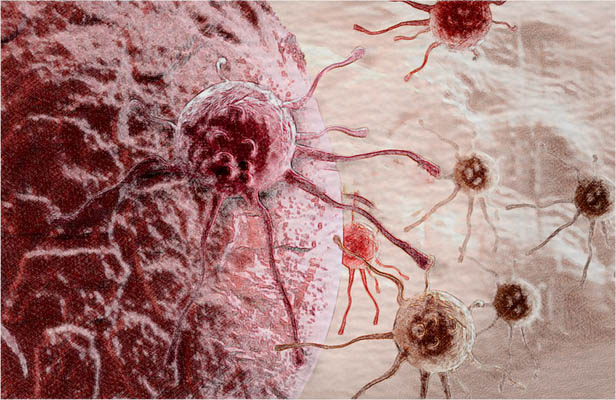https://gadgtecs.com/wp-content/uploads/2018/01/cancer-2.0.jpg
Tumors often comprise groups of cancer cells that show differential drug sensitivities. This is one of the reasons that initially effective treatments usually do not lead to a long-term benefit in patients. Researchers from the Netherlands Cancer Institute in Amsterdam, in collaboration with the international biotechnology company Genmab A/S, have now developed a new strategy to tackle this problem. They report, for the first time, an approach to target different cell groups within single tumors based on their respective characteristics. The leading scientific journal Nature Medicine publishes their findings on January 15.
New target in resistant tumors
Although much progress has been made in the treatment of cancer, cures remain uncommon, because tumors develop resistance over time to the drugs used. It is becoming more and more clear why this happens, for instance in melanoma, the most aggressive form of skin cancer. Melanomas often carry a mutation in the BRAF-gene, which causes the tumor cells to proliferate. This can be treated efficiently by a tailored treatment using a BRAF-inhibitor. Unfortunately, many tumors develop resistance to this drug, even when it is combined with a so-called MEK-inhibitor, which hits the same signaling pathway.
A research group led by Prof. Daniel Peeper at the Netherlands Cancer Institute had already previously discovered that such resistant melanomas start producing another protein, AXL. The AXL- protein sits on the outside of the tumor cell and therefore constitutes a good target in principle for treatment. Peeper: “Therefore, we set up a collaboration with the international biotechnology company Genmab, which had developed advanced medicine against AXL.” It concerns a so-called antibody-drug conjugate (ADC), comprising an antibody coupled to a cytotoxic molecule. This product, called HuMax-AXL-ADC, specifically binds to tumor cells expressing the AXL-protein, and can thereby kill them. The researchers demonstrated that multiple types of AXL-high tumors could efficiently be eliminated in this way.
[caption id="attachment_3104" align="aligncenter" width="539"]
 An artists impression of cancer cells[/caption]
An artists impression of cancer cells[/caption]Combination treatment 2.0
Ph.D. student Julia Boshuizen from the Peeper laboratory discovered that melanomas that were resistant to BRAF- and MEK-inhibitors indeed harbored a large number of AXL-high cells. However, she also observed that most tumors still contained considerable numbers of cells with little or no AXL. Because the researchers had already found that those cells remained sensitive to BRAF- and MEK-inhibitors, she came up with a plan. “We compared the resistant tumor with a bucket of marbles in two colors: yellow ones that have little AXL, which are sensitive to BRAF- and MEK-inhibitors; and red marbles that express lots of AXL and fail to respond to BRAF/MEK-treatment.” She continues: “If you wipe out the yellow marbles only, the red ones remain, and vice versa. So, to get rid of both colors, we thought it might be a good strategy to combine BRAF/MEK-inhibitors with HuMax-AXL-ADC.”
You May Like: Genetically modified algae kills ninety percent cancer cells with no harm to others
The team managed to show that melanomas that were resistant to the standard treatment in mice were still highly responsive to the new AXL-medicine. Moreover, they found that BRAF/MEK-inhibitors stimulated the production of AXL in tumor cells, rendering HuMax-AXL-ADC even more effective in a combination treatment. This rationally developed combo-treatment effectively eliminated both groups of tumor cells, resulting in more extended responses.
The road to the bedside
With this research project, the investigators have provided crucial pre-clinical evidence for the efficacy of the new AXL-medicine, as well as for the combination with BRAF- and MEK-inhibitors for melanoma patients. Genmab is currently testing HuMax-AXL-ADC in patients with a number of different types of tumors, including patients with melanoma, to assess the safety, side effects and the first signs of efficacy.
‘Cooperative targeting of melanoma heterogeneity with an AXL antibody-drug conjugate and BRAF/MEK inhibitors,’ Nature Medicine 2017-01-15 online
Boshuizen et al.
This research was funded by Genmab, KWF (Dutch Cancer Society) and the European Research Council.
https://gadgtecs.com/2018/01/12/personalized-cancer-treatment-2-0-new-combination-strategy-developed/
Comments
Post a Comment